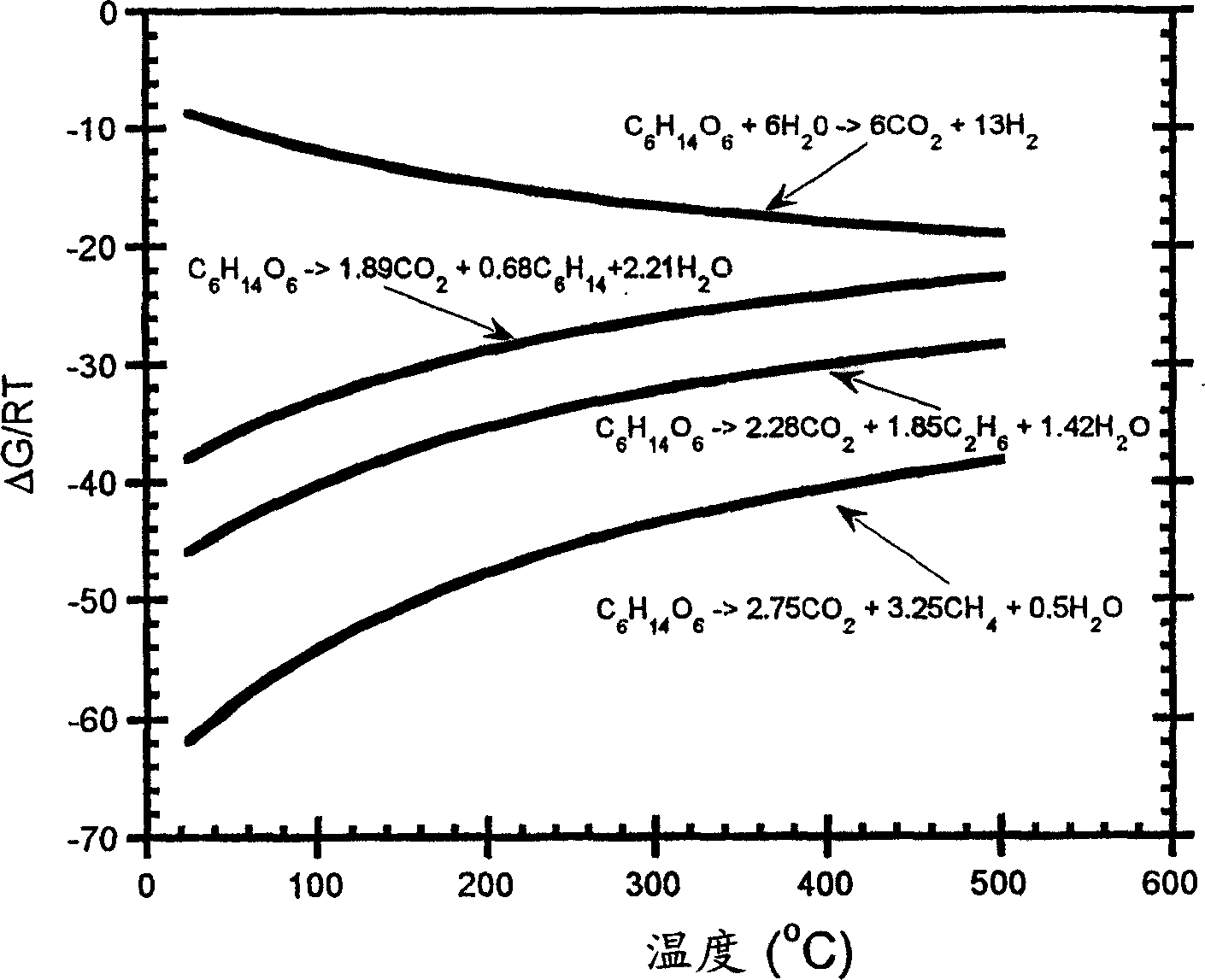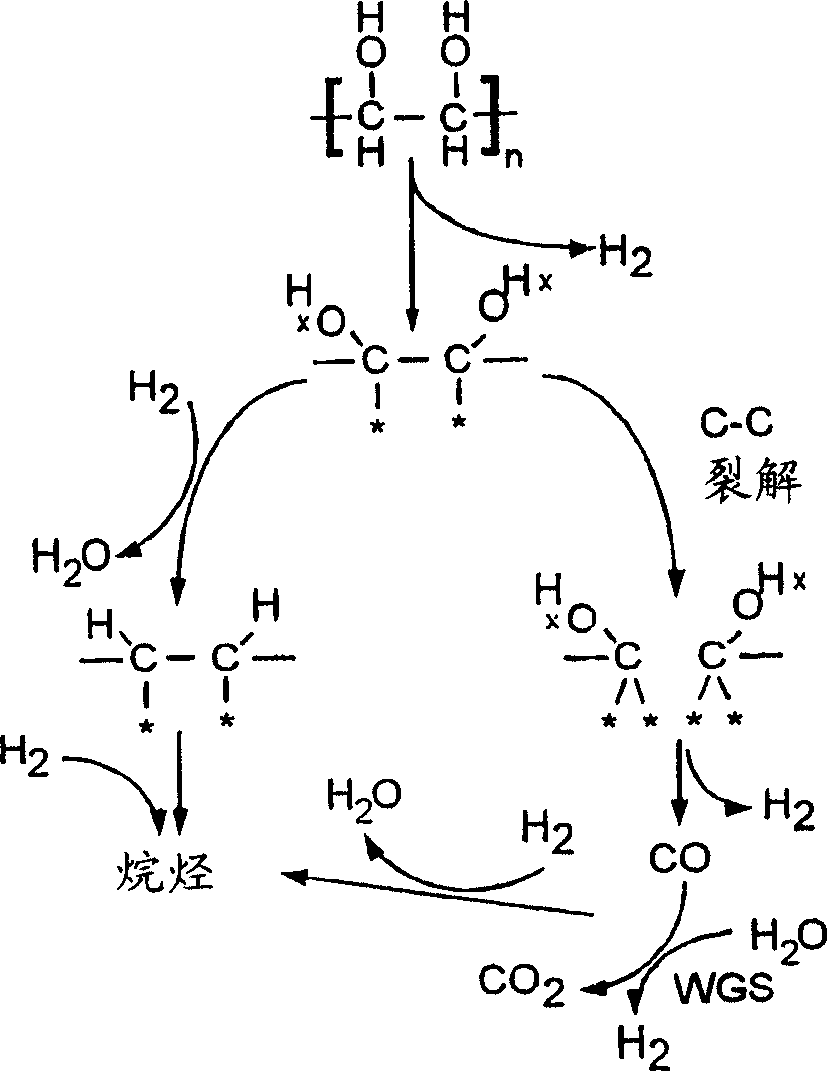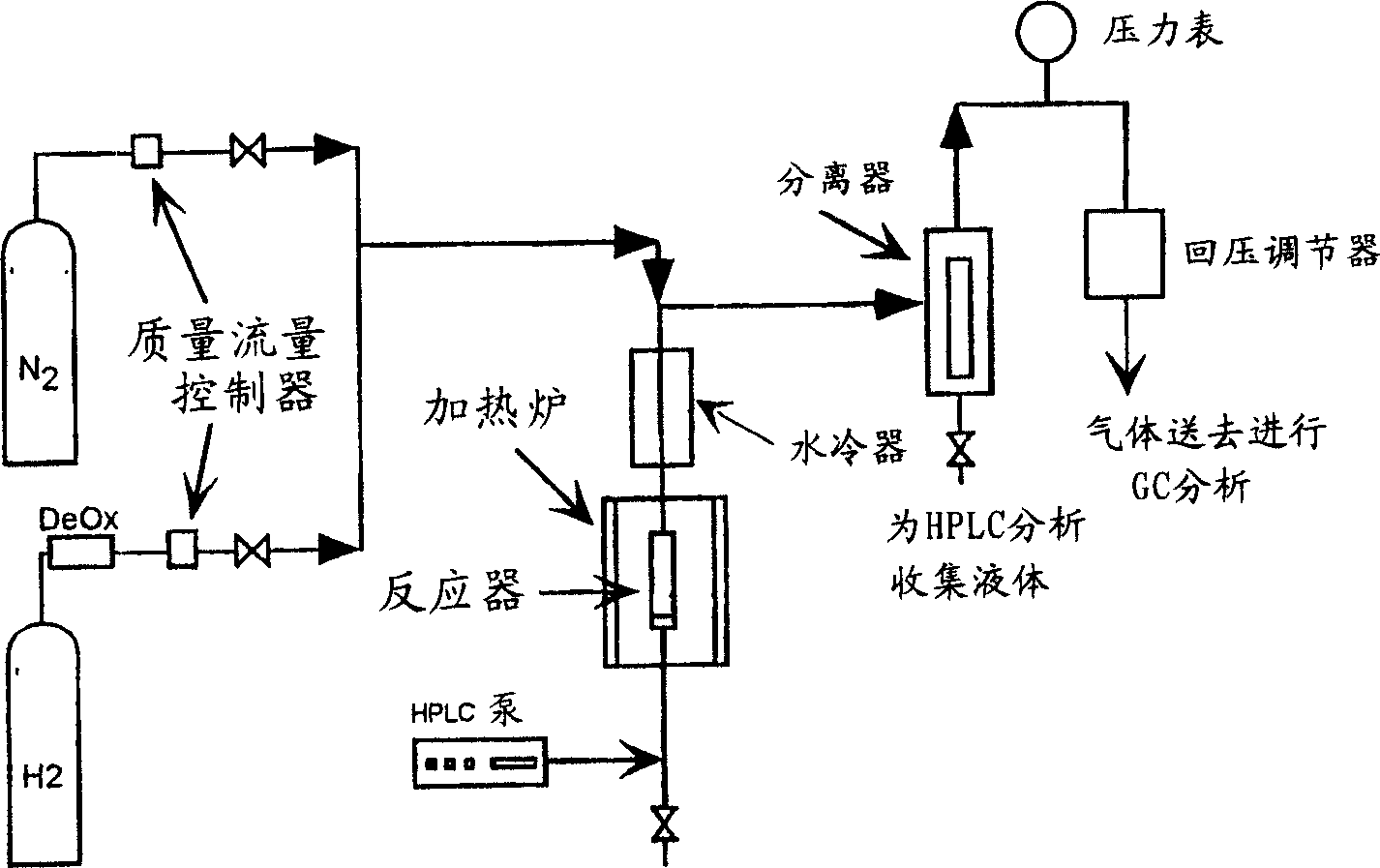Low-temperature hydrocarbon production from oxygenated hydrocarbons
A technology for oxidizing hydrocarbons and silicon dioxide, applied in the direction of producing hydrocarbons from oxygen-containing organic compounds, catalysts, organic chemistry, etc., can solve the problems of raw material depletion, achieve the effect of increasing energy yield and reducing volume
- Summary
- Abstract
- Description
- Claims
- Application Information
AI Technical Summary
Problems solved by technology
Method used
Image
Examples
Embodiment 1
[0091] By using Pt(NH 3 ) 4 2+ exchange of H on the silica surface + , to prepare a 5wt% silica-supported platinum catalyst system (Pt / SiO 2 ). The preparation process includes the following steps: (1) use Pt(NH 3 ) 4 (NO 3 ) 2 (Aldrich Chemical, Milwaukee, Wisconsin) to exchange Cab-O-Sil EH-5, by using Pt(NH 3 ) 4 (OH) 2 (2) filter the resulting material and rinse with deionized water; and (3) dry the filtered material in air at 390K overnight.
Embodiment 2
[0093] A 5 wt% silica-supported platinum catalyst system was prepared according to the procedure of Example 1. However, the catalyst was modified by dehydroxylation and capping with trimethylethoxysilane. The catalyst system was prepared as follows: (1) Fumed silica (Cab-O-SilEH-5 grade) was dried at 600K for 10 hours in a flow of helium; Platinum is added to the carrier by deposition; (3) the obtained Pt / SiO is calcined at 600K in an oxygen flow 2 Catalyst system; (4) use hydrogen flow to reduce the calcined catalyst system at 600K; (5) dehydroxylate the resulting catalyst system at 1173K under helium flow; (6) use CO to treat the catalyst system at 300K to prevent Platinum sites were reacted with trimethylethoxysilane; (7) the resulting catalyst was treated with 4.5 mmol trimethylethoxysilane (Gelest Inc., Tullytown, Pennsylvania) at 300K; (8) the catalyst was treated with CO, until the residual pressure is 10 torr; (9) at 473K, compounding trimethylethoxysilane into the c...
Embodiment 3
[0095] The catalyst system described in Examples 1 and 2 was used for the liquid phase reforming of sorbitol. The device used for reforming is image 3 Schematic depiction of the device. The catalyst was loaded into a 1 / 4 inch stainless steel reactor. The catalyst was reduced by flowing hydrogen over the catalyst at a temperature of 225°C. The catalyst is cooled after reduction. The system was then purged with nitrogen, and a 10 wt% aqueous solution of sorbitol was charged into the reactor using an HPLC pump. Once liquid is observed in the separator, the pressure of the system is raised to 21.7 bar using nitrogen (pressure is controlled by back pressure regulator 26; see image 3 ). The liquid feed was pumped through the catalyst bed while the furnace heated the catalyst bed to 225°C. The liquid leaves the reactor and is cooled in a jacketed water cooler ( image 3 , reference number 22). Liquid from this cooler is combined with a nitrogen stream at the top of the cool...
PUM
 Login to View More
Login to View More Abstract
Description
Claims
Application Information
 Login to View More
Login to View More - R&D
- Intellectual Property
- Life Sciences
- Materials
- Tech Scout
- Unparalleled Data Quality
- Higher Quality Content
- 60% Fewer Hallucinations
Browse by: Latest US Patents, China's latest patents, Technical Efficacy Thesaurus, Application Domain, Technology Topic, Popular Technical Reports.
© 2025 PatSnap. All rights reserved.Legal|Privacy policy|Modern Slavery Act Transparency Statement|Sitemap|About US| Contact US: help@patsnap.com



